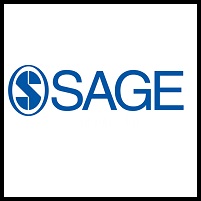| مشخصات مقاله | |
| انتشار | مقاله سال ۲۰۱۸ |
| تعداد صفحات مقاله انگلیسی | ۱۶ صفحه |
| هزینه | دانلود مقاله انگلیسی رایگان میباشد. |
| منتشر شده در | نشریه Sage |
| نوع مقاله | ISI |
| عنوان انگلیسی مقاله | Technological Intensity of Indian Exports and the Performance of Emerging Asian Economies |
| ترجمه عنوان مقاله | شدت تکنولوژی صادرات هند و عملکرد اقتصادهای در حال ظهور آسیا |
| فرمت مقاله انگلیسی | |
| رشته های مرتبط | اقتصاد، مدیریت |
| گرایش های مرتبط | اقتصاد مالی، مدیریت بازاریابی و صادرات |
| مجله | مطالعات اقتصاد در حال ظهور – Emerging Economy Studies |
| دانشگاه | Department of Economic Studies – Central University of Punjab – India |
| کلمات کلیدی | تجارت، FDI، تحقیق و توسعه، فن آوری، هند |
| کلمات کلیدی انگلیسی | Trade, FDI, R&D, technology, India |
| کد محصول | E7952 |
| وضعیت ترجمه مقاله | ترجمه آماده این مقاله موجود نمیباشد. میتوانید از طریق دکمه پایین سفارش دهید. |
| دانلود رایگان مقاله | دانلود رایگان مقاله انگلیسی |
| سفارش ترجمه این مقاله | سفارش ترجمه این مقاله |
| بخشی از متن مقاله: |
| Introduction
The importance of trade, as an economic activity and an engine of economic growth, has long been constituted in respective research endeavors (Frankel & Romer, 1999; Maity, 2013; Mishra, Lundström, & Anand, 2011; Samen, 2010). The trade-based economy is also found as the most predominant pattern of economic growth (Kim, 2014). However, in the present era of globalization, understanding the performance of trade went beyond the parameters of comparative advantage epitome and emphasized the role of technology in determining international competitiveness, as competition became more innovation and knowledge based (Dueñas-Caparas, 2006). Early trade theorists like David Ricardo accented on the relative labor productivity differentials as the basis of trade and indicated that each country has a comparative advantage. This belief was extended in the model of Hecksher-Ohlin, where countries were subject to have two factors of production (labor and capital) and face identical production functions but with different factor endowments. Technology in these two models has been treated either as having no bearing on the process of production and trade or at no charge (Sen, 2010). However, the proponents of neotechnology trade theory modified these views and emphasized the role of technological innovation in conferring cost advantages and creating new markets. “Technological gap” approach of Posner (1961) and “product life cycle” (PLC) by Vernon (1970) provides a theoretical analysis of these issues. This is because technological innovation intends to build dynamic comparative advantage through new methods of production or new products (Mardas, 1994). The sustainable development goal nine, that is, build resilient infrastructure, promote inclusive and sustainable industrialization and foster innovation, embraced on September 26, 2015, also entails that without innovation and technology, industrialization will not take place and without industrialization, development will not take place (FAO, 2017). Further, the new technologies are based on extensive arenas of scientific research and are likely fueling the next beckon of global economic growth. |
